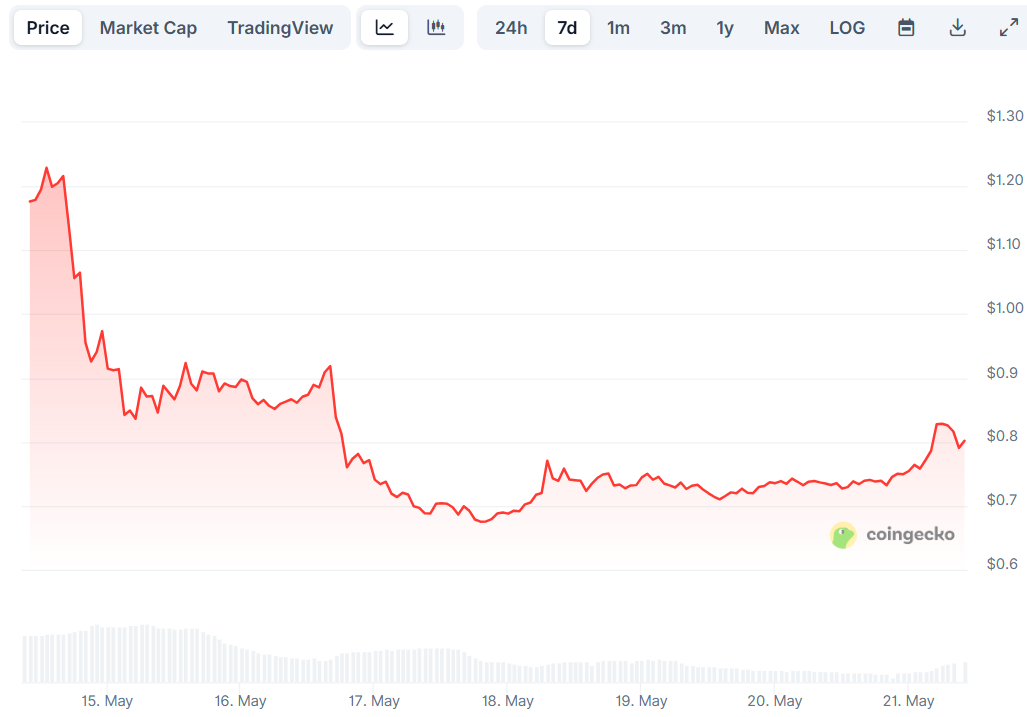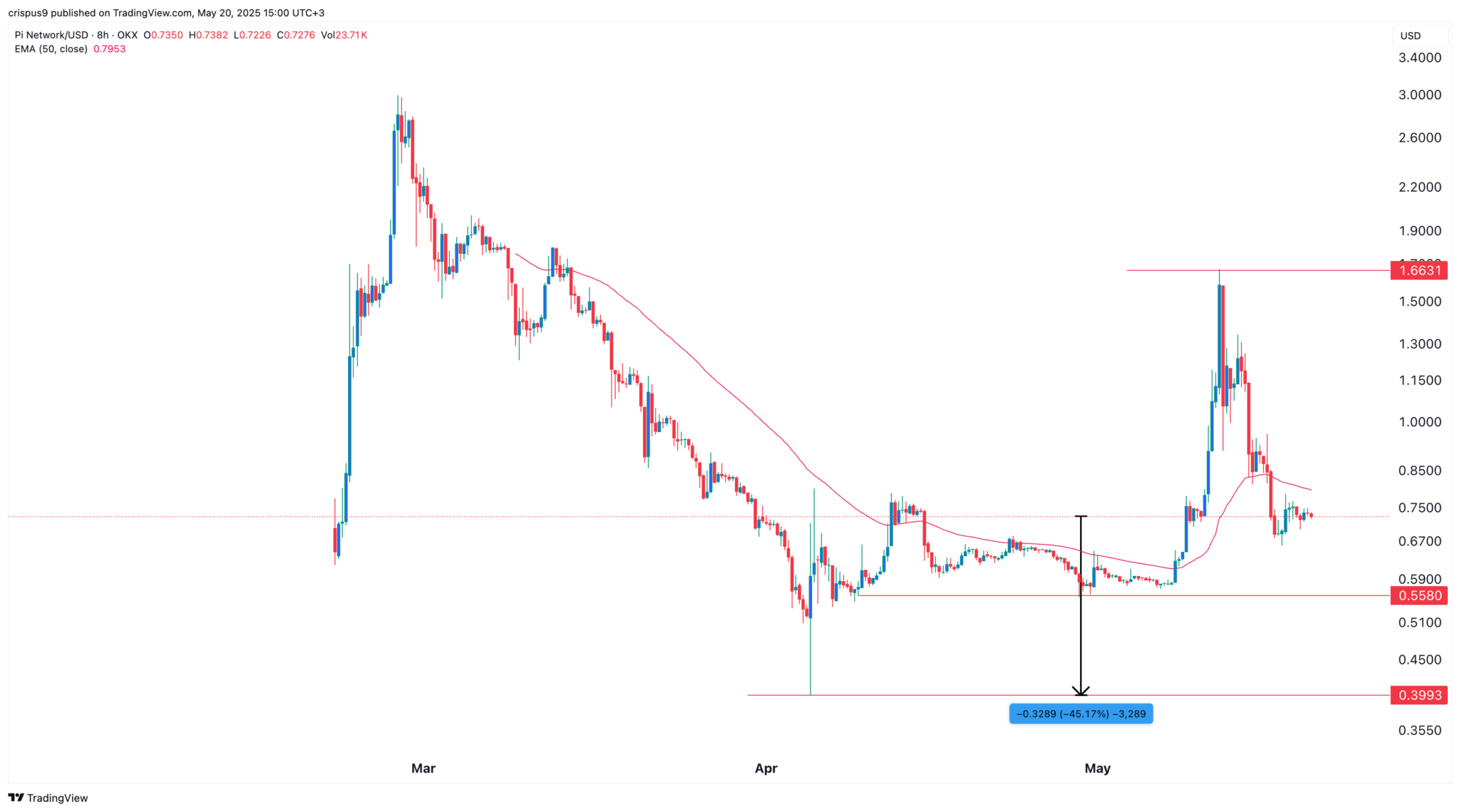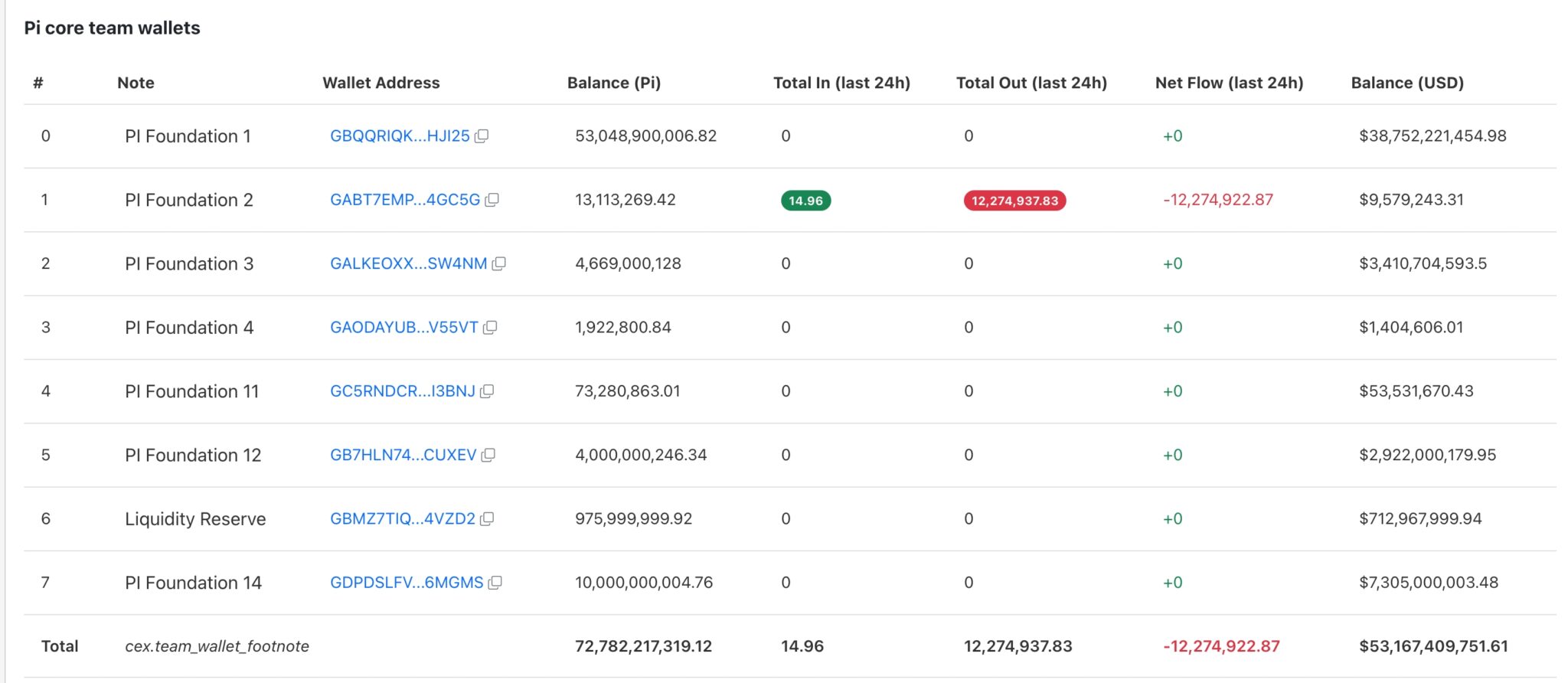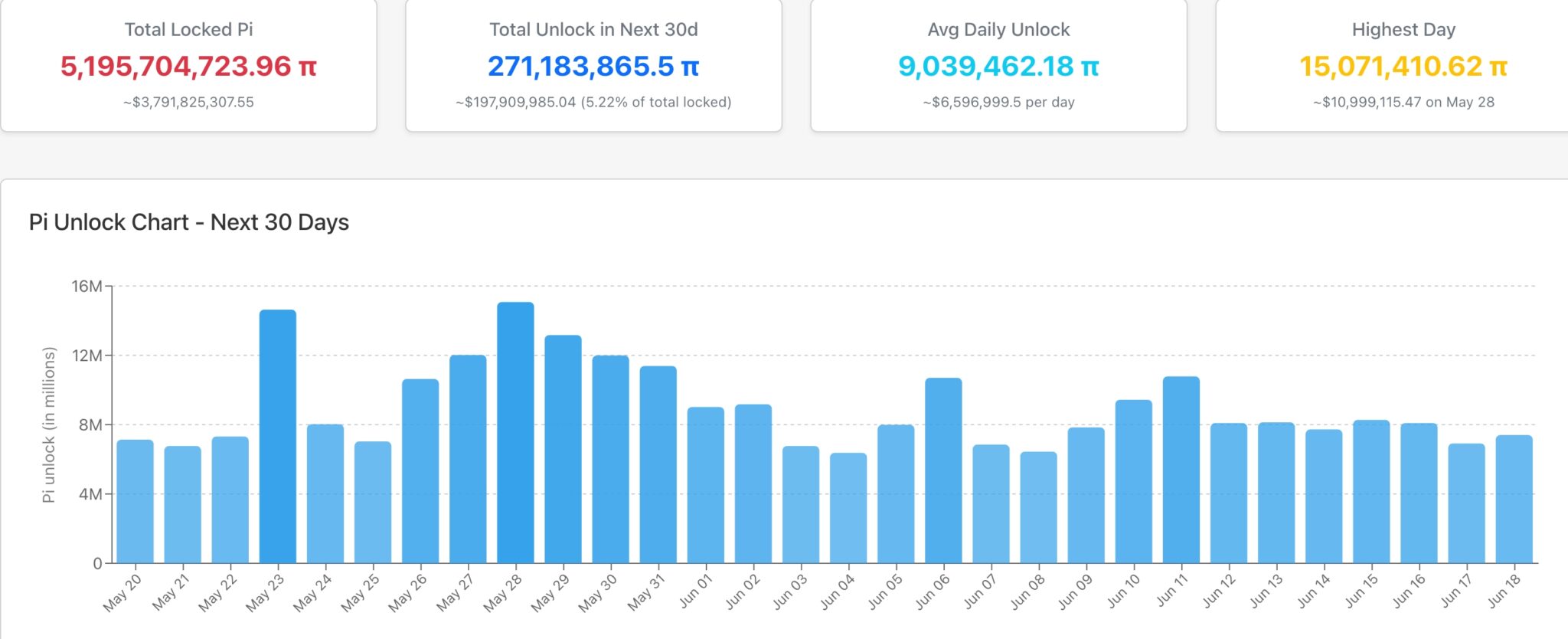TLDR
- Pi Network is trading at $0.7796, up 6% in 24 hours but down 38% over the past week
- Technical indicators show mixed signals with support forming around $0.77
- Many users still unable to access their coins due to KYC delays
- Lack of Tier 1 exchange listings and limited practical applications hinder growth
- Technical analysis suggests a possible 45% crash to $0.40 if support levels fail
Pi Network (PI) is showing early signs of recovery after experiencing a significant price drop recently. The cryptocurrency is currently trading at $0.7796, marking a 6% increase over the last 24 hours. However, it remains down 38% over the past week and is still more than 70% below its all-time high of $2.99 recorded in February.

Trading volume has seen a modest rise with over $221 million in the past day. This represents a 0.8% increase, suggesting some renewed interest from market participants.
The daily chart presents a mixed picture for PI. The relative strength index hovers near 51, indicating a neutral trend rather than a clear directional bias.
Momentum indicators and the moving average convergence divergence (MACD) show that selling pressure continues to exist in the market.
There are some positive signals as the 20-day and 30-day moving averages have flipped to buy, hinting at returning buying strength. However, shorter-term moving averages like the 10-day EMA and SMA still flash sell signals.
Support appears to be forming around the $0.77 level. For a stronger recovery to be confirmed, PI would need to break above the $0.84 resistance level.
Technical Warning Signs
The eight-hour chart reveals a potentially bearish pattern forming. PI has been in consolidation mode since May 12, when it reached $1.6631 ahead of ecosystem news.
This consolidation is taking the shape of a bearish pennant pattern, a formation that often precedes continued downward movement.

If this bearish pattern plays out, PI could drop to a support level of $0.5580, which marked previous lows in April.
Should that support fail to hold, further decline to around $0.40 is possible. This would represent a 45% drop from current levels.
The bearish outlook would only be invalidated if PI manages to rise above the psychologically important $1 mark.
PI has now fallen below the 50-period moving average, adding to the bearish technical picture.
Ongoing Challenges
Despite early recovery signs, PI faces several challenges that could limit sustained price growth. One major issue is that many users remain unable to access their coins since the mainnet launched in February.
These accessibility problems stem from persistent Know Your Customer (KYC) delays. This has created frustration within the community, especially among early miners who expected to freely trade their tokens.
The lack of listings on major exchanges like Coinbase and Binance has kept liquidity low. While PI is available on platforms such as Gate.io, Bitget, and OKX, the absence of Tier 1 exchange listings has restricted wider adoption.
Some community members point to the team’s limited transparency as a factor in the lack of major exchange listings.
Questions also surround the $100 million Pi Network Ventures fund. This fund was intended to support new projects in the ecosystem but has yet to show concrete progress.
Centralization Concerns
Pi Network’s centralized structure presents another obstacle. Reports indicate that the Pi Foundation holds approximately 72.7 billion tokens valued at over $53 billion across seven wallets.

The foundation is believed to control additional tokens through thousands of other wallets. This high level of centralization exposes holders to risk since these wallets are not independently audited.
Major exchanges typically avoid listing highly centralized projects due to the associated risks.
If the foundation were to sell these tokens or if their wallets were compromised, the price impact could be severe.
Supply and Demand Imbalance
Token unlocks present an additional challenge for PI’s price. Data shows that the network will unlock 271.18 million tokens in the next 30 days, with daily unlocks averaging over 9 million.

Over the next 12 months, approximately 1.49 billion tokens will be unlocked. With PI having a maximum supply of 100 billion and a current circulating supply of 7.9 billion, the supply will eventually grow by over 92 billion.
These unlocks increase available supply, which can put downward pressure on price, especially if there isn’t sufficient demand.
Limited Utility
Despite reportedly having a large user base of possibly 60 million, PI has limited practical application beyond speculation. There aren’t many widely used decentralized applications or DeFi services on the network.
While events like PiFest have generated excitement, the lack of working products and real-world usage means price gains often don’t last.
The mainnet launched with around 100 apps, but most haven’t gained significant traction. This has led some to describe Pi as a “ghost chain” – a blockchain with few active developers building applications.
It remains uncertain whether projects funded by the Pi Network Ventures fund will succeed in creating meaningful utility for the token.
PI is currently facing resistance at $0.84. If it can maintain support above $0.77 and break through this resistance, it may target the $1 mark once more. However, without addressing fundamental issues like token accessibility, exchange listings, and ecosystem growth, significant price advancement may remain elusive.
Stay Ahead of the Market with Benzinga Pro!
Want to trade like a pro? Benzinga Pro gives you the edge you need in today's fast-paced markets. Get real-time news, exclusive insights, and powerful tools trusted by professional traders:
- Breaking market-moving stories before they hit mainstream media
- Live audio squawk for hands-free market updates
- Advanced stock scanner to spot promising trades
- Expert trade ideas and on-demand support



